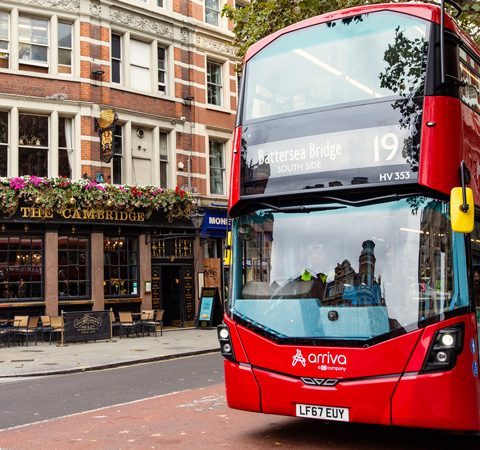Arriva is electrifying a third depot in London: Thornton Heath to run 109 e-buses from 2025
Arriva announces electrification of its third London bus depot. The operator’s Thornton Heath site in south London will run 109 zero-emission vehicles from spring 2025 following the successful installation of a new electricity substation and advanced charging facilities. Thornton Heath is the third depot to benefit from Arriva’s £730m modernisation programme, which will see all […]

Arriva announces electrification of its third London bus depot. The operator’s Thornton Heath site in south London will run 109 zero-emission vehicles from spring 2025 following the successful installation of a new electricity substation and advanced charging facilities.
Thornton Heath is the third depot to benefit from Arriva’s £730m modernisation programme, which will see all 14 of its depots in the capital electrified by 2030 – supporting Transport for London (TfL) in its goal to fully decarbonise the city’s bus fleet by the same year. Arriva operates around 100 contracted routes on behalf of TfL (17% of all bus services in the capital), with a fleet of 1,500 buses.
Arriva to spend £730m in modernisation programme
A new electricity substation was installed at Thornton Heath with 5km of underground cabling required to handle the increased demand from charging multiple buses simultaneously. The depot will initially service 22 electric buses, increasing to 109 once the project completes in spring next year, following the removal of diesel refuelling tanks from the site.
Thornton Heath is the third of Arriva’s depots in London to be electrified after Brixton Tramshed and Enfield were connected to the grid in 2021, servicing a fleet of 54 electric buses. Work to electrify Arriva’s depots in Tottenham, Palmers Green, Croydon and Norwood is currently underway, with the remainder to follow, Arriva states.
Jens Abromeit, Managing Director, Arriva UK Bus, said: “I’m proud that our programme of depot electrification is gathering pace in London with this third depot now ready to serve a substantial fleet of zero-emission buses. This represents a significant investment for Arriva and a commitment to working in partnership with TfL to deliver on their decarbonisation agenda. With each depot we electrify, we are reducing emissions and improving air quality, whilst also setting new standards in passenger comfort.”







